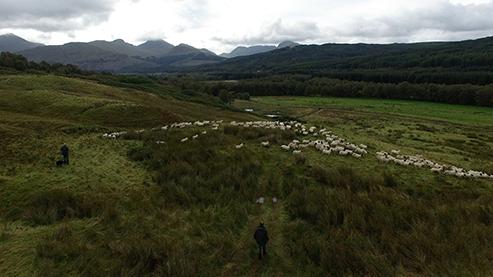Along with so many other things, Covid-19 scuppered our plans to travel the length and breadth of the UK delivering sheep health road-shows in association with NSA and SRUC. Nevertheless, we were all keen to ensure that these important messages were still delivered so we agreed to embrace modern technology and try online webinars to inform all those interested on the risks posed by these “iceberg” diseases.
Infectious conditions that are classed as “iceberg” diseases include Border disease, caseous lymphadenitis (CLA), Johne’s disease and ovine pulmonary adenocarcinoma (OPA). Despite their increasing significance, many sheep farmers remain quite unaware of the real impact these diseases may have on their flocks, such as reduced performance and significant mortality. In addition, it is easy to spread these diseases unwittingly.
We delivered the first of three interactive webinars on April 30th beginning with an excellent introduction from NSA Chief Executive, Phil Stocker, setting the scene on what “iceberg” diseases are and why and how they should be managed more effectively. This was followed by our two 10-15 min talks; Craig on the management and control of Johne’s disease and Chris on OPA. The final speaker was Dr Alison Braddock from SRUC who provided an overview of the Premium Sheep and Goat Health Scheme, which currently includes maedi visna and Johne’s disease options.
Johne’s disease, also known as paratuberculosis, is a fatal infectious enteritis caused by the bacterium, Mycobacterium avium subspecies paratuberculosis (or Map, for short). The disease predominantly affects ruminants, although it has been reported in rabbits, hares and camelids. At Moredun, we are currently focused on constructing live attenuated mutant strains of MAP in an attempt to produce a better vaccine for Johne's disease.
OPA, also known as Jaagsiekte, is an infectious and fatal lung disease of sheep. It is caused by a virus called Jaagsiekte sheep retrovirus (JSRV), which infects cells in the lung, making them form tumours. The tumour cells then produce more of the virus, which can infect new areas of the lung or other sheep. The development of an accreditation-type scheme is of considerable importance and, with the recent application of ultrasound scanning to screen for this disease in whole flocks by the Moredun OPA research group (in collaboration with Phil Scott FRCVS), we hope this scheme will be the next step towards OPA control.
Ovine pulmonary adenocarcinoma (OPA, also known as jaagsiekte) is an infectious and fatal lung disease of sheep
The Premium Sheep and Goat Health Schemes (PSGHS) works in partnership with veterinary surgeons across the country. It is serviced by SRUC Vets, who have expertise covering all aspects of sheep and goat health issues and is a very useful scheme for those that want to manage their “iceberg” diseases effectively.
The webinars on April 30th and 13th of May were fully booked, each registered with 100 people. The feedback was great, with lots of good questions coming in via the Q & A session, along with a number of specific follow-up questions received by email from people who watched the webinar. Special mention must go to Louise Hart from NSA, for chairing and holding everything together, managing the technology, the live chat and Q&A.
The last remaining webinar, scheduled for the 20th May, is also fully booked but there are plans for a recording of one of the webinars to be made available on the NSA website after these dates.
